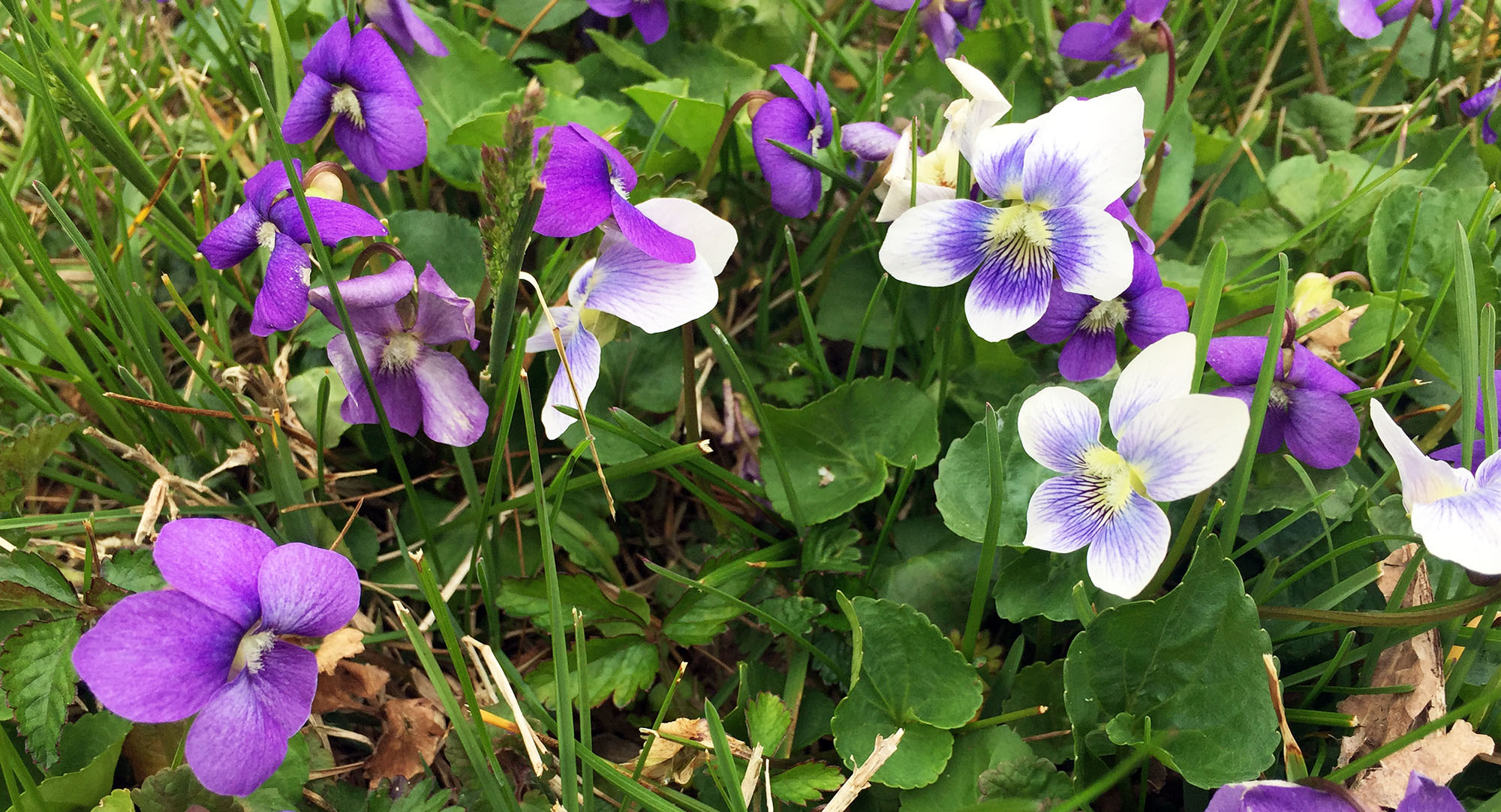Second Blooms

We all love the explosion of purple in the spring as violets[i]welcome us to the warmer weather. In the late spring and early summer we only see their dark green leaves flourishing, but did you know that they are blooming again?
Violets actually have two types of flowers… the ones you see beaconing to the bees to pollinate them, and then a second set that self-pollinate underground. These flowers never open, and never come above the soil. Often they are white, since they don’t need to attract pollinators, although sometimes they allow themselves the extravagance of a pale cast of purple.

The Greeks named these types of self-pollinating flowers kleistos gamos[ii], meaning “closed marriage”[iii] since they are self-pollinated.
Both types of flowers have advantages and disadvantage. The above ground flowers produce seeds with more genetic diversity, since the pollinators share pollen from other plants, but they are dependent on pollinators and other factors that might hinder seed production. The underground flowers have the advantage of being able to produce seeds that are basically reproductions of the plant itself, which means that it is likely to survive in the environment that the plant is in. They can also produce seeds in spite of environmental factors taking place above ground.

We are much like these violets. In the early part of our adulthood, we burst forth beautiful and glorious, for all the world to see, bringing forth new life with the innocence of violet blooms. Yet, it is often later in life that our work grows deep, even though sometimes hidden. These sensual twilight flowers, perhaps less beautiful, are what ensure the continuation into the future of those things that are tried and true. It is they that carry the wisdom of the ages.
[i]Dennis Horn and Tavia Cathcart, Wildflowers of Tennessee, the Ohio Valley, and the Southern Appalachians(Partners Publishing & The Tennessee Native Plant Society, 2018).
[ii]Alfred Ernest Knight and Edward Step Hutchinson, The Living Plant in Leaf, Flower, and Fruit: A Popular Book on Botany for the General Reader(University of Chicago, 1905).